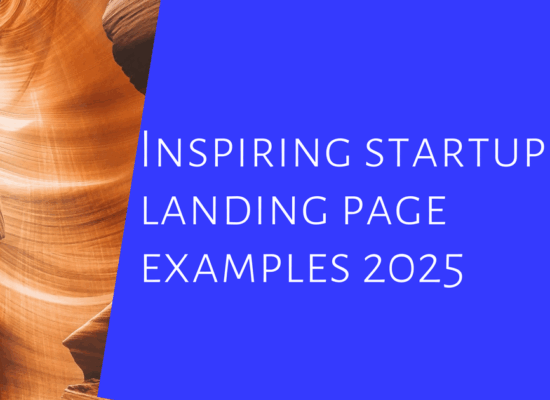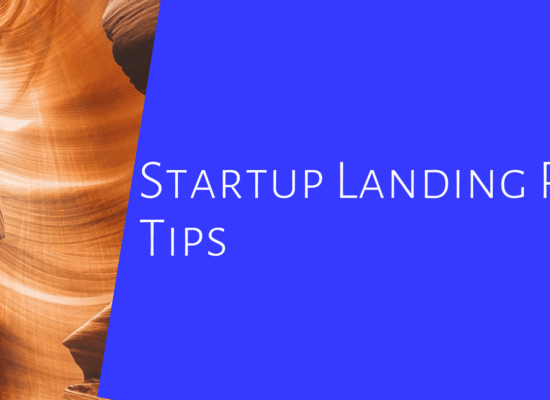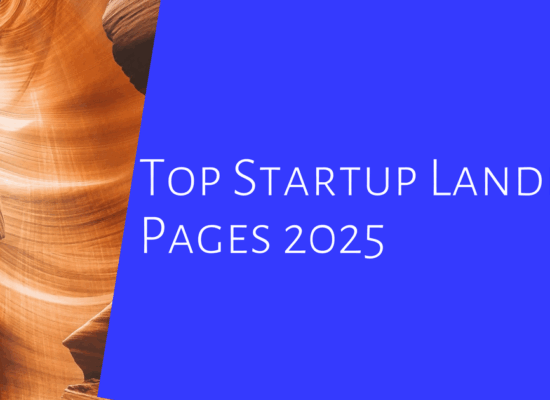Table of Contents
- Understand the Purpose of a Lead Capture Landing Page
- Define Your Target Audience and Set Clear Goals
- Create a Valuable and Relevant Lead Magnet Offer
- Write Clear, Concise, and Benefits-Focused Copy
- Match Headlines and CTAs to Visitor Expectations
- Design Lead Capture Forms to Reduce User Friction
- Use Social Proof to Build Trust and Credibility
- Apply Conversion-Centered Design for Focused Layouts
- Customize Messaging Based on Traffic Sources
- Plan an Effective Post-Conversion Follow-Up
- Structure the Page in Trust-Building Sections
- Use Wireframes and Testing to Improve Performance
- Incorporate Visuals That Support Your Offer
- Create Urgency to Drive Immediate Action
- Leverage No-Code Tools for Fast Landing Page Creation
Creating a landing page that captures leads fast means focusing on one clear goal: offering something valuable in exchange for visitor information. You first need to know who your audience is and tailor your messaging to them, whether they are new visitors or repeat customers. The offer should be simple but compelling, like an ebook or free trial, and the copy must be straightforward and benefit-driven. Keep forms short to avoid friction, add social proof like testimonials for trust, and design with clear headlines and strong calls to action that match visitor expectations. Testing different layouts helps improve conversions over time, while no-code tools make updates easy and fast.
Understand the Purpose of a Lead Capture Landing Page
A lead capture landing page has one clear job: turn visitors into leads by exchanging something valuable, like a free ebook or webinar, for their contact details, usually an email address. Unlike a homepage or product page, it focuses on a single goal without distractions such as multiple links or navigation menus that can pull visitors away. This simplicity helps visitors immediately understand what action is expected from them, reducing confusion or hesitation. Leads collected here are potential customers that your startup can nurture through email or follow-ups, making this page the crucial first step in building a relationship. The offer and form on the page should align with your overall business goals and sales funnel, ensuring that the leads you gather are not just numerous but also relevant and ready to engage.
Define Your Target Audience and Set Clear Goals
Knowing exactly who your landing page is for is crucial. Start by distinguishing whether your visitors are cold leads who have never heard of your startup, warm prospects already interested but not customers yet, or existing customers who may need re-engagement or upselling. Segmenting your audience this way helps tailor the messaging and offers so they resonate. For example, cold leads might respond better to educational content like ebooks or webinars, while warm prospects could be ready for a free trial or demo. Use analytics data and past campaign results to understand their demographics, interests, pain points, and motivations. This insight lets you craft offers that address their needs directly and make your page feel relevant and trustworthy. Alongside audience profiling, set clear, measurable goals such as acquiring 50 new leads per month or achieving a 12% conversion rate. Your landing page’s call to action should be obvious, guiding visitors toward the specific action you want them to take, whether signing up for a newsletter or downloading a guide. Align these goals with your broader marketing and business objectives to ensure consistency and focus. Finally, be prepared to revisit and refine your audience definitions and goals regularly as you gather more data and see what works best in practice.
Create a Valuable and Relevant Lead Magnet Offer
To capture leads quickly, your lead magnet must offer immediate value that visitors can use right away. Think about formats like ebooks, webinars, checklists, or templates, which are easy to consume and practical. The key is to align the offer closely with your product or service so you attract qualified leads who are genuinely interested. Make sure the magnet solves a real problem or answers a pressing question your audience faces. Instead of listing features, highlight clear benefits so visitors instantly see what’s in it for them. For example, instead of “Download our ebook,” say “Get the step-by-step guide to boost your startup sales by 30%.” Adding previews or samples, like a chapter from an ebook or a snippet of a checklist, can also build trust and clarify what they’ll get. To increase desirability, ensure your offer is exclusive or hard to find elsewhere, which makes it more compelling. Finally, keep the delivery simple and fast: offer instant downloads or immediate email access so the visitor’s reward feels effortless and timely. Testing different lead magnets over time helps uncover what works best to drive higher conversions.
| Lead Magnet Type | Description | Purpose |
|---|---|---|
| Free courses or challenges | Interactive learning experiences delivered over time | Engage visitors and provide in-depth value |
| Ebooks or comprehensive guides | Downloadable detailed written content | Offer immediate, easy-to-consume information |
| Reports or whitepapers | Data-driven or research-heavy documents | Establish authority and trust |
| Webinars | Live or recorded presentations on relevant topics | Create personal connection and real-time engagement |
| Product demos or free trials | Hands-on access to the product or service | Allow experience before purchase decision |
| Templates or checklists | Ready-to-use resources for quick wins | Facilitate ease of use and quick benefits |
| Newsletters | Regular updates and insights via email | Build ongoing relationship and trust |
Write Clear, Concise, and Benefits-Focused Copy
Use simple, straightforward language that anyone can understand. Avoid jargon or complicated terms that might confuse visitors. Your headline should be short, ideally under 50 characters, and clearly show the value visitors get from your offer. Break down key benefits into 3 to 5 bullet points so people can scan quickly without getting lost in long paragraphs. Always write from the visitor’s perspective, focusing on what they gain rather than just listing features. Cut out filler words and unnecessary details that distract from your main message. Use active voice and strong verbs to make your copy more compelling and encourage action. Keep sentences and paragraphs short to improve readability, especially on mobile devices. Briefly address common objections or concerns to reassure visitors and build trust. When possible, include numbers or statistics to make benefits feel real and tangible, like “Save 20 hours a week” or “Join 5,000+ satisfied users.” Finally, finish with a clear call to action that highlights what the visitor gets by converting, such as “Download Your Free Guide Now” or “Start Your Trial Today.” This approach helps visitors quickly understand the value and motivates them to take the next step.
- Use straightforward language that anyone can understand without jargon.
- Headlines should be brief, ideally under 50 characters, and clearly state the value.
- Bullet points help visitors quickly grasp key benefits without reading long paragraphs.
- Write from the visitor’s perspective, focusing on how they benefit directly.
- Avoid filler words or unnecessary details that distract from the main message.
- Use active voice and strong verbs that encourage action.
- Keep sentences and paragraphs short to improve readability.
- Address possible objections or concerns briefly within the copy.
- Use numbers or statistics to make benefits more tangible when possible.
- End with a clear call to action that reinforces the benefits of converting.
Match Headlines and CTAs to Visitor Expectations
To keep visitors engaged and reduce bounce rates, your landing page headline must directly reflect the ad or link that brought them there. This message match builds trust by delivering exactly what was promised. For example, if an ad offers a free ebook on productivity, the landing page headline should clearly state that same offer. Your calls to action (CTAs) should be specific and clearly describe the next step, like “Get Your Guide” or “Send Me the Ebook.” Avoid vague CTAs such as “Submit” or “Click Here” since they don’t communicate value. Incorporate urgency words like “Now,” “Today,” or “Limited” to encourage visitors to act quickly. Position CTAs prominently and repeat them on longer pages to keep the conversion goal front and center. Use contrasting colors to make CTAs stand out visually and ensure their tone matches the overall voice of your page, whether that’s friendly, professional, or urgent. Testing different CTA texts is essential to discover what resonates best with your audience. Additionally, using first-person language in CTAs (e.g., “Send Me the Ebook”) can create a stronger personal connection and increase conversions.
Design Lead Capture Forms to Reduce User Friction
To maximize lead capture on your startup landing page, design your forms with minimal friction in mind. Start by asking only for essential information, usually just an email address, to avoid scaring visitors away. If you need more details, break the process into multi-step forms that collect data gradually, making it less overwhelming. Enabling browser autofill speeds up form completion and reduces frustration. Always place your form above the fold and close to the primary call to action so visitors see it immediately. Use clear, friendly language in labels and buttons to make the experience approachable. Inline validation is also crucial; it highlights errors instantly, helping users fix mistakes without losing momentum. Be transparent about privacy by clearly stating your policies near the form, assuring visitors their information is safe and won’t be spammed. Avoid requesting sensitive or unnecessary details that can reduce trust and conversion rates. Since many users access landing pages via mobile, ensure your form is mobile-optimized with easy-to-tap fields and buttons. Finally, test different form lengths and field combinations to find the sweet spot where you get quality data without sacrificing conversions. For example, a startup offering a free ebook might start with just an email field, then later ask for job title or company in follow-up steps, balancing user ease and valuable lead information.
Use Social Proof to Build Trust and Credibility
Social proof is a powerful tool to build trust quickly on your startup landing page. Start by including genuine testimonials from satisfied customers that highlight specific benefits or outcomes they experienced, this shows real results and helps prospects relate. Displaying logos of well-known clients or media outlets that have featured your startup adds instant credibility and signals reliability. Numbers matter too: showcasing how many users, downloads, or sign-ups you’ve achieved can tap into herd mentality, encouraging visitors to join a popular choice. To ease worries about data sharing, place security badges or certifications near your forms, reassuring visitors their information is safe. For richer engagement, video testimonials provide authenticity and a more personal connection than text alone. Content previews such as sample chapters or snippets can demonstrate the value of your offer upfront. Position social proof elements close to your call-to-action buttons so trust is reinforced right when visitors decide to convert. Keep your social proof fresh by updating it regularly, and include a simple anti-spam statement near your email form to assure visitors that their contact info won’t be misused. Together, these strategies make your landing page more trustworthy and encourage faster lead capture.
Apply Conversion-Centered Design for Focused Layouts
To create landing pages that actually convert, simplicity is key. Keep your layout clean and free from clutter so visitors aren’t distracted and their attention naturally falls on your call to action (CTA). Use encapsulation by placing your forms and CTAs inside contrasting boxes or sections, this visual separation highlights the conversion elements and makes them stand out. Color contrast plays a huge role too: choose button and text colors that pop against the background to draw eyes immediately. Adding arrows or subtle visual cues can nudge visitors’ gaze toward your signup form or button, guiding them without overwhelming. Always place your primary CTA above the fold so visitors don’t have to scroll to take action. Limit navigation options to reduce distractions and keep people focused on the goal. Whitespace isn’t just empty space, it helps break up content and makes your page easier to scan, improving readability and focus. Select fonts and sizes that are easy to read on all devices, from desktop monitors to small phone screens. Responsive design is non-negotiable: your landing page must look great and function smoothly on every screen size. Finally, don’t settle on one layout. Test different designs to see which arrangement gets the best conversion rates, and optimize from there. For example, a startup might try placing the signup form in a centered colored box one week, then test a right-aligned layout with directional arrows the next, tracking which version drives more leads.
Customize Messaging Based on Traffic Sources
Knowing where your visitors come from is key to crafting landing page messages that resonate. Whether traffic arrives via SEO, paid ads, social media, or email, tailoring your headline and offer to fit their familiarity and intent improves conversion rates. For cold traffic from paid ads or social channels, focus on educational or introductory offers like ebooks or webinars that gently introduce your startup and build trust. Warm traffic, such as email subscribers or returning visitors, respond better to direct calls to action or upsell opportunities since they already know your brand. Matching the tone of your language to the channel is important too, a more formal style works for professional networks like LinkedIn, while a casual, friendly voice suits social media audiences. Using tracking parameters, you can dynamically adjust page elements like headlines, offers, and benefits to highlight what matters most to each segment. For example, SEO visitors might see benefits focused on long-term value, whereas paid ad visitors get quick, action-oriented offers. Segmenting your email follow-ups based on landing page visits helps keep messaging relevant and personal, increasing engagement. Retargeting ads with consistent messaging further reinforce your offer and remind visitors to act. Finally, monitor how each traffic source performs so you can invest your budget and effort where it drives the best results, continually refining your approach for maximum lead capture.
Plan an Effective Post-Conversion Follow-Up
Right after a visitor submits their information, show a clear confirmation page that thanks them and explains the next steps. This reassures them their action was successful and sets expectations early. Quickly follow up with an automated welcome email that delivers the promised lead magnet without delay, so you build instant trust. In that email, let them know what they can expect next, such as how often you’ll contact them or if there are upcoming offers. Use a series of follow-up emails to nurture leads by sharing helpful tips, useful resources, or relevant product details that keep them engaged. Be transparent about how you handle their personal data, including easy opt-out options to respect their preferences. Segment your leads based on their activity and interests to send more personalized messages. For example, if someone clicks on a link about a specific feature, trigger a relevant follow-up with more info or a special deal. Encourage sharing or referrals in your emails to grow leads organically. Track lead behavior closely so you can spot sales-ready prospects and reach out at the right moment. Finally, regularly review and tweak your follow-up sequences to improve engagement and conversion rates over time.
Structure the Page in Trust-Building Sections
Start your landing page with a clear Hero Section that quickly tells visitors what your startup does and includes a strong, specific call to action. This sets the tone and guides the visitor’s eye immediately. Follow this with a Differentiation section using three simple bullet points to highlight what makes your startup unique or better than alternatives. Keep this section focused and easy to scan so visitors instantly recognize your value. Next, add a Proof section with testimonials, success stories, customer logos, or media mentions. This builds credibility and reassures visitors that others trust your product or service. Showing the real team behind your startup also adds authenticity: include photos and brief bios linked to social profiles to create a genuine connection. Place your lead capture form inside a contrasting box (encapsulation) to draw attention and make it stand out on the page. Keep each section concise and focused on a single message to avoid overwhelming visitors. Make sure the layout naturally guides the visitor’s eye from the headline to the benefits, proof, and finally the call to action. Include privacy assurance statements near your forms to reduce hesitation and build trust. Lastly, design the page to adapt smoothly across desktop and mobile devices, and avoid clutter or unnecessary navigation links that might distract visitors from your conversion goal.
Use Wireframes and Testing to Improve Performance
Start by creating simple wireframes to map out your landing page layout. Focus on clear sections and a strong, easy-to-understand value proposition. This early step helps prioritize content and design elements before investing time in development. Once your wireframe is ready, use 5-second tests with new users to see if they instantly grasp the offer and know what to do next. These quick impressions reveal if your message is clear or if confusion exists. Next, implement heatmaps to track where visitors click, scroll, or pause. Heatmaps highlight distractions or important elements that visitors might be missing. Complement this with visitor session recordings, which show real user behavior and expose usability problems or hesitation points. To find what truly drives conversions, run A/B tests comparing different headlines, calls to action, form lengths, images, or page layouts. For example, testing a shorter form against a longer one can reveal the best balance between gathering enough data and keeping visitors engaged. Be sure to run these tests long enough to collect statistically significant results before making changes. Gathering direct feedback through surveys can also provide valuable insights into how visitors perceive your messaging, design, and trustworthiness. Use this mix of quantitative data and qualitative feedback to iterate and improve your landing page continuously. Avoid settling on your first design; instead, refine based on evidence to boost lead capture. Finally, document every change and its impact systematically. This practice helps you track what works, avoid repeating mistakes, and build on past successes for future updates.
Incorporate Visuals That Support Your Offer
Choosing the right visuals for your landing page means picking images and videos that clearly relate to your lead magnet or product. For example, if you’re offering an ebook, show its cover or even a preview page to build trust and give visitors a clear idea of what they’ll get. Short videos that introduce your offer or demonstrate how the product works can boost engagement and help explain value quickly. Avoid decorative or irrelevant visuals since they can distract and reduce focus on your main goal. Place these visuals close to your signup form or CTA to naturally draw attention and reinforce why visitors should act. High-quality, professional images increase your credibility, while consistent colors aligned with your brand help highlight CTAs and keep the page cohesive. Make sure visuals load fast and look good on mobile devices, as slow or poorly scaled images hurt user experience and conversions. Always test different visuals to see how they affect your conversion rates, because sometimes a seemingly good image can lower focus or slow down your page. Overall, visuals should support and enhance your message, not compete with it.
Create Urgency to Drive Immediate Action
Creating a sense of urgency on your startup landing page can significantly boost lead capture by encouraging visitors to act right away. Limited-time offers like discounts or exclusive bonuses work well to push immediate decisions. Adding countdown timers that show how much time remains to claim the deal or register for an event visually reinforces this urgency. Highlighting limited availability, such as a fixed number of webinar seats or limited resource downloads, adds a layer of scarcity that motivates action. Use honest, clear language like “Only a few spots left” or “Offer ends tonight” to avoid sounding fake or overused, as maintaining trust is crucial. Position these urgency elements close to your call-to-action buttons so visitors immediately see why they should act now. To tap into FOMO, explain what visitors stand to lose by waiting, such as missing out on valuable content or special pricing. Combining urgency with clear benefits shows visitors that acting now isn’t just rushed but genuinely valuable. If possible, include live counters or real-time stats showing how many have already signed up, which can further encourage participation. Since different audiences respond to urgency differently, testing various tactics will help identify what resonates best and maximizes conversions.
Leverage No-Code Tools for Fast Landing Page Creation
No-code landing page builders like Carrd, Unbounce, and Webflow make it easy to launch lead capture pages quickly without any coding skills. These platforms offer simple drag-and-drop editors and prebuilt templates designed specifically for converting visitors into leads. By using these templates, you can follow proven design and copy best practices while speeding up your workflow. You can also test mobile responsiveness directly within the tool to ensure your page looks great on all devices. One of the biggest advantages is the ability to iterate fast: update headlines, images, or layouts instantly without needing a developer. Many no-code tools come with built-in integrations for email marketing and CRM systems, so leads flow automatically into your nurture sequences once someone submits a form. Features like A/B testing and visitor analytics are often included, allowing you to optimize your page’s performance without complicated setups. This frees up your development resources to focus on improving your core product instead of wrestling with landing page technicalities. With no-code tools, you stay agile, able to scale and tweak your landing pages rapidly based on real market feedback, which is critical for early-stage startups aiming to capture leads fast.
Frequently Asked Questions
1. What are the key elements that make a startup landing page effective at capturing leads?
An effective startup landing page clearly presents the value proposition, includes a compelling call to action, uses simple and persuasive language, displays trust signals like testimonials or badges, and has an easy-to-use form for capturing visitor information.
2. How can design and layout impact the conversion rate of a startup landing page?
Design and layout influence how visitors perceive your page and can either guide them toward taking action or distract them. A clean layout with a clear visual hierarchy, consistent branding, fast loading speed, and minimal distractions helps visitors focus on the main goal, improving conversion rates.
3. Why is it important to tailor the messaging on a startup landing page to the target audience?
Tailoring messaging ensures your page speaks directly to your potential customers’ needs and pain points. When visitors feel understood and see how your startup solves their problems, they are more likely to engage and provide their contact details.
4. What role does A/B testing play in optimizing a startup landing page for lead capture?
A/B testing allows you to compare different versions of your landing page elements like headlines, images, or call-to-action buttons. This helps identify which options perform best, enabling you to make data-driven decisions to improve lead capture rates over time.
5. How can social proof be effectively incorporated into a startup landing page to boost lead generation?
Social proof, such as customer testimonials, reviews, logos of partners, or user counts, builds credibility and trust. Including these elements in visible areas of the page reassures visitors that others have found value in your startup, increasing the odds they will share their information.
TL;DR A winning startup landing page focuses on a single goal: converting visitors into leads by offering something valuable in exchange for their contact info. Know your audience, create a clear and compelling offer, and use concise, benefit-driven copy. Match headlines and CTAs with visitor expectations, minimize friction with streamlined forms, and build trust through social proof and logical page sections. Use conversion-centered design principles, tailor messages based on traffic sources, and plan strong follow-ups. Keep testing with wireframes and A/B experiments, incorporate relevant visuals, and create urgency to prompt action. No-code tools help build and iterate quickly, letting startups move fast and capture leads efficiently.




